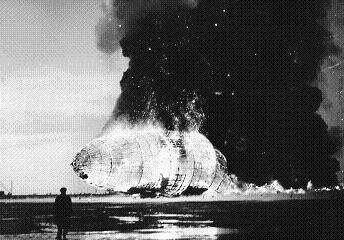I’m lecturing at SUNY Buffalo, Monday October 24, at 6 P.M.
Details here; contact info here.
If you’re in the area, feel free to crash the show. Or if you have friends in Buffalo, you might shoot them a heads-up about this event.
I’ll be speaking on:
“Skinners of the Visible World*: Images of the Unspeakable and the Unthinkable in Contemporary Culture.”
Synopsis follows…
When Oliver Wendell Holmes decreed, in his seminal essay on photography, that the daguerreotype enabled us to skin the surfaces of things and leave their substance to rot, in the Desert of the Real, he didn’t know the half of it.
Early in the 21st century, we live amid a whirl of disembodied images, and the frenzy of media imagery is only accelerating. More and more, we find ourselves face to face with the unspeakable, and even the unspeakable: videotaped beheadings, apocalyptic weather, “war porn”—it’s a livingroom Atrocity Exhibition.
I’ll explore the far fringes of visual culture, from the torture porn of Abu Ghraib to the cultural collateral damage of videotaped beheadings; from the growing traffick in Victorian post-mortem photographs, on eBay, to the posthuman fantasies—Photoshopped images of half-human/half-animal chimera—dreamed up by online fetishists; from homemade videos of wartime atrocities to the increasingly Xtreme nature of the X-rated Web. What are the politics of “just looking”? What are the moral limits of the aesthetic gaze? As (unwitting?) spectators at the carnival of postmodern pathologies staged by modern media, we must make sense of these images, and of our role as consumers of them.
(*Props to Stuart Ewen for the title, shamelessly lifted from his magisterial All Consuming Images.)


Moon
Fascinating view you choose to look at!
this term “war porn” i don’t know, if you “invented ” it, but it seems an exellent way of capturing what it is.
can you alaborate, on what you call ” Victorian post-mortem”? what is that?
i wish to read more about what you have to say about:
“What are the politics of “just looking”? What are the moral limits of the aesthetic gaze? As (unwitting?) ”
is it possible to read all of this lecture that you gave?
thanks for an exellent article.
M. Dery
The envelope, please. And the answers are:
1. No, I didn’t “invent” the term. (Why the ironic quotes, I wonder?) Google it, and you’ll get a bajillion hits. To the best of my knowledge, I *did* coin the term “warcore,” which I’ve used to describe the nightmare conjunction of gut-churningly graphic images of wartime atrocities and the pornographic imagination.
2. Victorian post-mortem photography, a genre that persisted well into the 20th century, was the practice of photographing the dead—typically, infants or young children, given the high rate of infant mortality in those days. They were melancholy keepsakes, something for grieving parents to remember their lost child by. There are several books on the subject, most notably SECURE THE SHADOW.
3. As for your other questions, you’ll just have to wait until I publish the essay! Further details posted here, when the time is right.
Thanks, M. Dery
Moon
thanks, for the brief explanation, and may i add there was intention in my “” to any cynic insinuation.
art in all it’s forms and photography, aims for quite some time to skin the surfaces of things.. in the Desert of the Real, why should war reportage, for that matter, would be any different?
and sure for we are amid this, whirl of disembodied images, and the frenzy of media imagery, the image impact now days is stronger then words, helas for so many of us, and the more it goes, the more the eye looks for distortion as well as for false beauty, unreal beauty, what is real? what is horror? with the manipulations anyone can create now days with very easy computer program, the representation of ones “true” or fantastic, or fetish like vision is at the reach of ones hand, and you are right about, the need for us as cultured and consciousnt civilization ,to ponder about our *politics* (i hope you don’t see my use of ** as a cynic act, this time, for I’ve seen you using it your self) of “just looking”? and what are the moral limits of the aesthetic gaze?
M. Dery
No “cynical insinuation” taken. As for your comment about the spectacular (in boths senses of the word) nature of war photography, point taken. You might want to check out this article from the Canadian arts and culture glossy, THIS magazine: http://www.thismagazine.ca/issues/2004/07/warphotography.php
Key graph: “War, by its very nature, is spectacle–a grand staged execution–and staged photos are often the only images we are allowed to see. Another photo from the Vietnam War–Eddie Adams’s photo of an executioner’s bullet as it strikes a still-standing prisoner on the street in Saigon–was staged. The bullet is real, the corpse is real but the execution was moved outside for the benefit of the press. Its formal posing ultimately disturbs more than the before-death gaze on the prisoner’s face.”